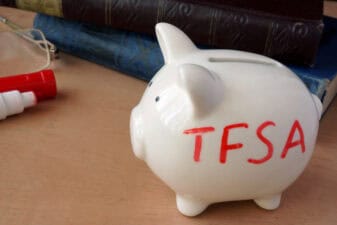On Monday, May 3, the Department of Finance and Canada Mortgage and Housing Corporation (CMHC) boosted the eligibility for the First-Time Home Buyer Incentive (FTHBI). This increase will, in theory, help more first-time homebuyers in three regions (Toronto, Vancouver, and Victoria) be able to afford homes in Canada’s hottest regions.
But what exactly changed, and should you consider using the FTHBI to buy a home? Let’s take a quick look.
What is the First-Time Home Buyer Incentive?
The First-Time Home Buyer Incentive (FTHBI) is a government-sponsored program that lends eligible Canadians 5 to 10% of the price of a home as a down payment. The idea is that by increasing Canadians’ down payments, the government can help lower their monthly mortgage payments, giving Canadians who can’t afford a home an opportunity to finally buy one.
But, of course, that 5 to 10% has strings attached. It’s not a gift: it’s a shared-equity mortgage. That means that the government shares any increase (or decrease) in your home’s value. You don’t have to make monthly payments, or pay any interest. But, in 25 years, or when you sell your home, whichever comes first, the government will use your home’s value to determine how much you ultimately owe them.
Let’s look at an example. Let’s say you bought a $700,000 home in Vancouver, and you’re eligible for a 10% shared-equity mortgage, or $70,000. In 25 years, if your home’s value jumped to $1,000,000, you’d owe the government 10% of your home’s value, or $100,000 — $30,000 more than what you borrowed. Likewise, if your home fell in value, say, to $500,000, you’d only have to repay $50,000, or $20,000 less than what you borrowed.
So, what changed?
While the rules of the FTHBI didn’t change, the eligibility criteria did. Here’s what the changes look like.
- First-time home buyers with a household income of $150,000 or less can participate (up from $120,000).
- First-time home buyers can buy a home up to 4.5 times their household income (up from 4 times).
- First-time home buyers under the incentive can buy a house priced at a maximum of $722,000 (up from $505,000).
Again, the CMHC has implemented these changes for only three regions: Toronto, Vancouver, and Victoria. All other regions will still follow the former criteria.
Should you use the FTHBI?
No doubt, the FTHBI can help struggling Canadians secure their first home. But that doesn’t mean it will be right for everyone who’s eligible. Before you apply, here are some drawbacks to consider.
1. The FTHBI could severely limit your choices
The real reason the CMHC has raised the eligibility criteria is, well — no one can find a house in Vancouver, Toronto, or Victoria under the old maximum ($505,000). That was true in 2019 when the program started, and it could still be problematic today under the new criteria.
To be eligible for the FTHBI, you can’t buy a home that’s more than $722,000. For many Canadians, that will be a challenge. In Toronto, the average price of home has soared to $1 million, and in Vancouver it’s hovering around $1.4 million. You may find a home that’s $722,000, but you’ll likely have to make sacrifices.
2. You could feel trapped
Unfortunately, the FTHBI doesn’t transfer to a new home. If you want to move house, you’ll have to repay the government the money you borrowed first, which could lead some Canadians to live longer in a home than they truly want.
3. You still need to decide if you can afford a home
The FTHBI gives you a boost, sure, But it may lead you to buy more home than you can reasonably afford. Always take into consideration all the costs of homeownership, such as maintenance, property taxes, mortgage fees, closing costs, and homeowners insurance.
Bottom line
In theory, the First-Time Home Buyer Incentive lowers monthly mortgage payments, helping families buy more homes in markets where the housing prices have skyrocketed. But before you apply, weigh the cons against the pros. With the prices of homes skyrocketing, the FTHBY may not be practical for you right now.



